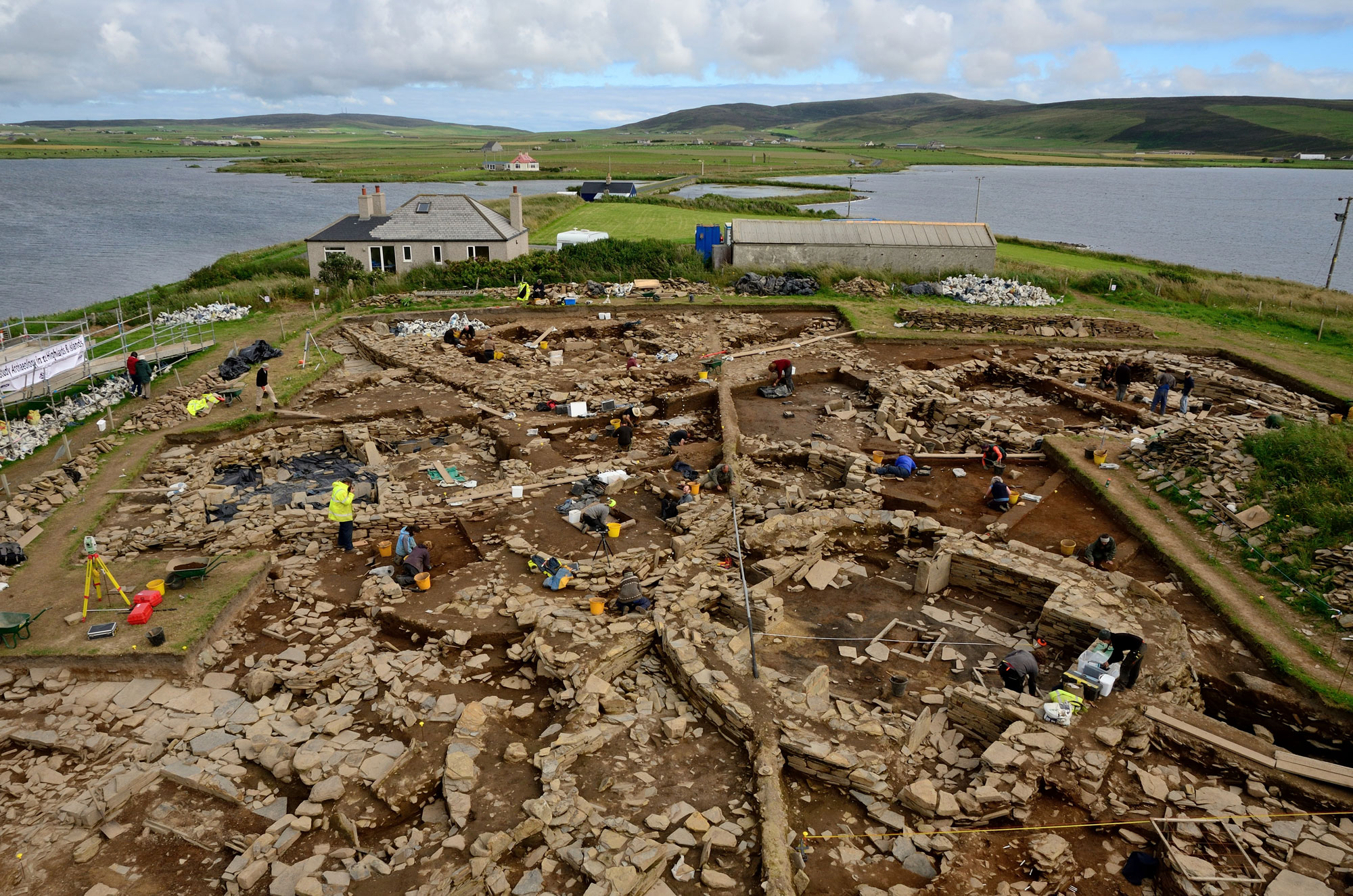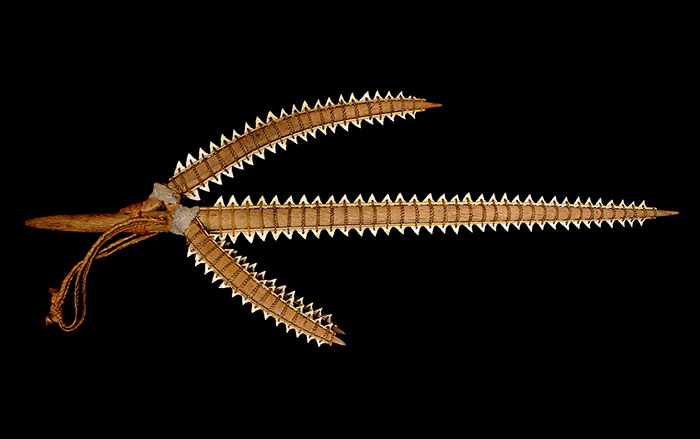To the naked eye, the pendant once looked like solid gold, but anthropologist David Peterson of Idaho State University knows its secret. Using a powerful scanning electron microscope at the Center for Archaeology, Materials and Applied Spectroscopy, Peterson discovered that more than 3,500 years ago, a craftsman in the Russian steppes made the ornament appear to be solid gold by using a miniscule amount of the precious metal and a great deal of chemical knowledge. Peterson believes that the Late Bronze Age metalworker, a member of the Srubnaya people, employed a technique known as depletion gilding. The pendant was made with a core of (now corroded) copper, which was covered with a very thin foil of electrum (a mixture of gold and silver). Before or after wrapping the pendant, the surface of the foil may have been covered for several days in a solution of salt and/or other minerals that are corrosive to silver. The silver would have become a black scale that was then washed away—leaving a micrometers-thick layer of gold on the surface, burnished to look even richer.
Depletion gilding has been found in artifacts from the third-millennium b.c. royal cemetery of Ur in Mesopotamia and the pre-Columbian Andes. However, the pendant, which was excavated in the 1990s in a young girl’s grave at the site of Spiridonovka II, would be the earliest known example from the Eurasian steppes. Peterson’s research on ancient Eurasian steppe metallurgy began while he was a member of the Samara Valley Project, sponsored by Hartwick College and the Institute for the History and Archaeology of the Volga. “Evidence of depletion gilding at this time in this area is a big surprise and stands to greatly impact our understanding of the technical sophistication of Srubnaya pastoralists,” says Peterson. “A kind of technological sleight of hand or dissembling was used in covering the copper ornaments with a very thin gold and silver foil, and then altering the surface to make it look more like pure gold, a strong indication of the high valuation of gold.”
Depletion gilding has been difficult to identify because the principle used—the removal of material rather than its addition—differs from modern gold plating, which uses chemicals or electrolysis to deposit gold on an object’s surface. The technique also differs from other ancient gilding practices, such as hammering gold foil onto an object without additional preparation, or diffusion bonding (used by the Greeks and Romans), which involves attaching gold through the application of heat and pressure.









